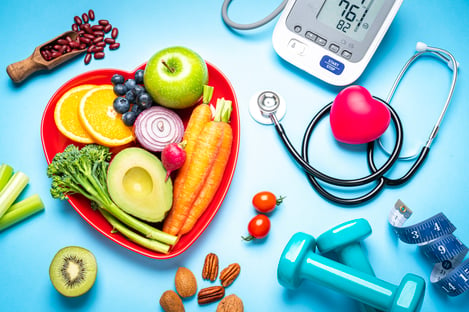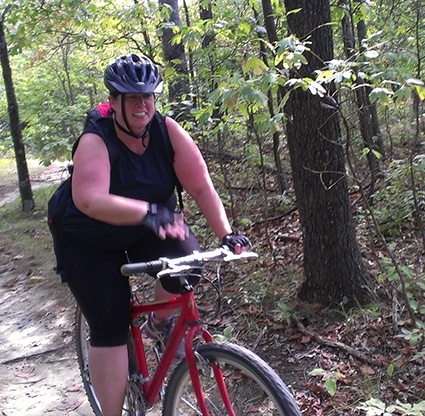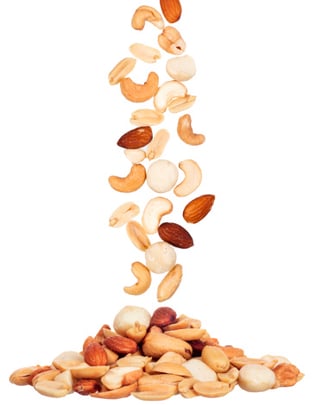 We all know regular exercise is great for your heart and overall health, but what does that actually mean? The truth is, the benefits of exercise can start almost immediately, and your body continues to adapt over time as you stick to your routine. The key is consistency: finding an exercise routine that works for you and maintaining it. If you stop exercising, your body can lose the adaptations it worked hard to achieve.
We all know regular exercise is great for your heart and overall health, but what does that actually mean? The truth is, the benefits of exercise can start almost immediately, and your body continues to adapt over time as you stick to your routine. The key is consistency: finding an exercise routine that works for you and maintaining it. If you stop exercising, your body can lose the adaptations it worked hard to achieve.
What Am I At Risk For?
Many people don’t realize they’re at risk for cardiovascular disease until it’s too late. These risks often remain hidden because we can’t physically see them. However, the American College of Sports Medicine (ACSM) has identified a set of risk factors to watch for. Some, like age and family history, can’t be changed, but others can be improved through lifestyle choices like exercise.
Non-Changeable Risk Factors
- *Age: Men over 45 and women over 55 are at increased risk.
- *Family history: If a male family member had a heart attack or heart surgery before age 55—or a female family member before age 65—you may have a higher risk.
Changeable Risk Factors
- Smoking: Current smokers or those who quit within the past six months.
- Physical inactivity: Not meeting the recommended 150-300 minutes of moderate exercise or 75-150 minutes of vigorous exercise per week.
- BMI (Body Mass Index): A BMI over 30 increases your risk.
- Blood pressure: Resting blood pressure greater than 130/80 mmHg.
- Cholesterol levels: LDL >130 mg/dL, HDL <40 mg/dL, or total cholesterol >200 mg/dL.
- Blood sugar levels: Fasting blood sugar >100 mg/dL or A1C >5.7%.
Items with a (*) are beyond your control, but the rest can be improved through regular exercise and healthy habits. These measurements require testing by a medical professional, like your primary care physician (PCP).
What Are the Benefits of Exercise?
Let’s break down how regular physical activity can positively affect the changeable risk factors:
Smoking
It’s well known that smoking is harmful to your health. While exercise can’t undo the damage caused by smoking, it can help curb cravings and support efforts to quit. For additional resources, talk to your doctor about strategies and options.
Physical Inactivity
Being physically inactive can lead to other risk factors worsening over time. Incorporating regular exercise, even in small amounts, can make a big difference. Avoid sitting for long periods, and aim to move more throughout the day. Every step counts!
BMI
Weight loss doesn’t have to be complicated. At its core, it’s about calories in vs. calories out. When you start exercising while maintaining your current calorie intake, your body begins burning excess calories, which can lead to weight loss. Over time, this reduces your BMI. If you’re curious about how many calories you should consume, schedule a Resting Metabolic Rate test with a health fitness specialist.
Blood Pressure
Ideally, resting blood pressure should be below 120/70 mmHg. During exercise, your heart works harder, and blood pressure rises temporarily. However, after exercise, your heart rate slows and your blood vessels relax, which lowers your blood pressure below its pre-exercise level. Over time, this adaptation helps your body maintain a healthier resting blood pressure.
Cholesterol
Exercise improves cholesterol by lowering the “bad” LDL cholesterol that clogs arteries and raising the “good” HDL cholesterol that helps clear LDL. Your body also uses cholesterol for energy during exercise instead of storing it. Pairing exercise with a heart-healthy diet amplifies these benefits. If you have questions about your diet, our registered dietitians are here to help.
Blood Sugar
Our body breaks down food into sugar, which is stored in the muscles and bloodstream. Exercise helps regulate this process by using excess blood sugar for energy, which improves insulin sensitivity and lowers resting blood sugar levels. Diet also plays a significant role, so consider meeting with a dietitian for personalized advice.
Where Do I Start?
Research consistently shows that exercising 150-300 minutes per week at moderate intensity (or 75-150 minutes per week at vigorous intensity) significantly reduces risk factors and benefits heart health.
Keep in mind that exercise intensity is unique to each person based on their fitness level. Working with a health fitness specialist ensures you’re exercising safely and effectively for your needs. Stop by the Track Desk to schedule your free strategy session and personalized workout program today!
Exercise is an excellent way to complement other heart-healthy habits, but it’s not a substitute for prescribed medications. Always consult your healthcare provider before starting a new exercise program.


 Did you know that cardiovascular disease is one of the leading causes of death?
Did you know that cardiovascular disease is one of the leading causes of death? 
 Has a physician or other healthcare provider recently told you to improve your diet and exercise? If you are like most Americans, there is also a pretty good chance that you have a stressful lifestyle that leaves you short on the time, money, and energy it takes to implement these changes. Besides, other than a few extra pounds, you haven’t really noticed any changes to your body, right?
Has a physician or other healthcare provider recently told you to improve your diet and exercise? If you are like most Americans, there is also a pretty good chance that you have a stressful lifestyle that leaves you short on the time, money, and energy it takes to implement these changes. Besides, other than a few extra pounds, you haven’t really noticed any changes to your body, right? February is
February is  Matthew Walker, the director of the
Matthew Walker, the director of the  Can you remember preschool when the teacher would turn down the lights and break out the cots? Nap time! You might not have had that exact experience, but as humans we are prone to napping. In our go-go-go life, time is money. To society, sleeping during the day is seen as a luxury that we cannot provide ourselves, and is usually thought of as a sign of laziness.
Can you remember preschool when the teacher would turn down the lights and break out the cots? Nap time! You might not have had that exact experience, but as humans we are prone to napping. In our go-go-go life, time is money. To society, sleeping during the day is seen as a luxury that we cannot provide ourselves, and is usually thought of as a sign of laziness. You lose 15 pounds. Then gain back 10. Then it’s time to try the newest diet out there and you lose 20 pounds. Then gain 20 back. Does this cycle sound familiar? This is called yo-yo dieting, or the cycle of gaining and losing the same pounds over and over again. This cycle is dangerous because of its long-term health effects. Hopefully reading through these dangers will prevent you from trying the next fad diet craze and instead adopt the theory of “slow and steady!”
You lose 15 pounds. Then gain back 10. Then it’s time to try the newest diet out there and you lose 20 pounds. Then gain 20 back. Does this cycle sound familiar? This is called yo-yo dieting, or the cycle of gaining and losing the same pounds over and over again. This cycle is dangerous because of its long-term health effects. Hopefully reading through these dangers will prevent you from trying the next fad diet craze and instead adopt the theory of “slow and steady!” I sat down with Pete Binhack and his wife, Julie, both active and longtime
I sat down with Pete Binhack and his wife, Julie, both active and longtime  There comes a time when a story of struggle, strife, and success must be shared to remind others that you are never alone in your battle, and that achievement and happiness are closer than you may think. Katie Feltman has such a story.
There comes a time when a story of struggle, strife, and success must be shared to remind others that you are never alone in your battle, and that achievement and happiness are closer than you may think. Katie Feltman has such a story.  You’d think with the scary words the doctor was saying I would have walked out of there that day and taken charge of things right then. But change isn’t like that—not for me, at least. I was frustrated with how I felt, and I know this will sound superficial but it is true: I hated how I looked, which I didn’t realize then but now know was key to my struggle. Self-hate = no self care, and that was how I was living my life. I was living life in a muted capacity, and I lacked the motivation to do something about it—any of it.
You’d think with the scary words the doctor was saying I would have walked out of there that day and taken charge of things right then. But change isn’t like that—not for me, at least. I was frustrated with how I felt, and I know this will sound superficial but it is true: I hated how I looked, which I didn’t realize then but now know was key to my struggle. Self-hate = no self care, and that was how I was living my life. I was living life in a muted capacity, and I lacked the motivation to do something about it—any of it.
 Nuts, basically one of the original food groups and predating even the most basic diet, have been a part of human existence since the beginning, and there is good reason. They taste good and are loaded with nutrients. The properties and benefits of nuts vary based on each individual nut, with some options being a little healthier than others.
Nuts, basically one of the original food groups and predating even the most basic diet, have been a part of human existence since the beginning, and there is good reason. They taste good and are loaded with nutrients. The properties and benefits of nuts vary based on each individual nut, with some options being a little healthier than others.